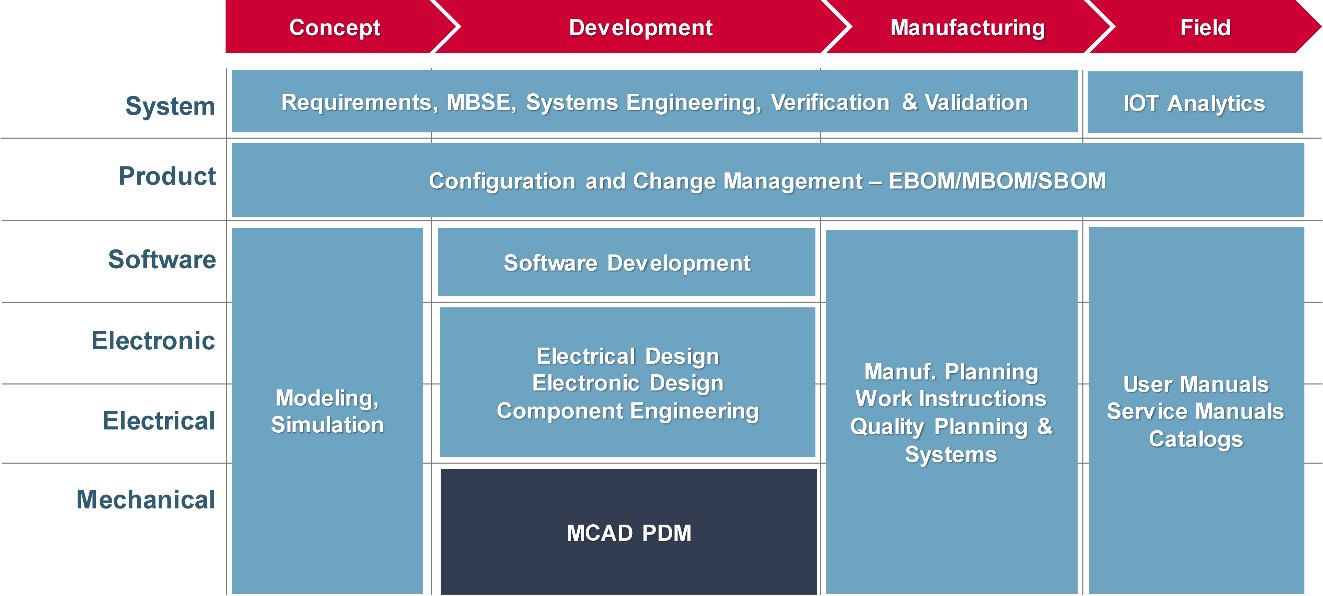The Business of Engineering is a term we’ve used to describe the multiple facets of developing today’s complex, connected products – from the design challenges to the disciplines involved to the type of data and processes that connect them. In essence, it reflects the elaboration and expansion of the product development challenge that teams face today, and a contrast to the Science of Engineering which historically referred to the world of CAD.
Today’s Business of Engineering covers the broad range of engineering disciplines and product factors that include:
- The complexity of layered software, electronics, electrical, and mechanical design.
- Cross-discipline design, decisions, data, and processes.
- Systems engineering and engineering for systems of systems.
- Related critical development processes such as requirements management, process planning, technical publications, and quality.
- Enterprise-wide involvement in the product lifecycle from product requirements to in-service product use.

If those topics sound like just another day in the office, that’s the point. Manufacturers are already living The Business of Engineering. It’s another reason why there’s always a lot of head nodding when we discuss the term with product leaders (as described in an earlier post).
Where The Business of Engineering is Going
Because product complexity is always growing, it means that The Business of Engineering is growing in parallel. So it’s worth a look at what’s new in BoE since we first coined the term 18 months back. Here are the emerging solutions customers are exploring to tackle The Business of Engineering:
- Model-Based Systems Engineering - Systems Engineering and systems validation that supports reuse and integrates with hardware and software engineering processes
- Simulation data and process management – democratizing simulation while ensuring traceability and eliminating duplicate work
- Support for manufacturing execution, service and maintenance – extending configuration control through the product lifecycle
- Flexible capabilities for supplier collaboration – maximizing supplier involvement while maintaining security and protection of intellectual property
The Business of Engineering ≠ Email and Spreadsheets
Manufacturers are frustrated because they can’t move as fast as the market demands. They can’t effectively manage complex product development using systems and processes built for the Science of Engineering. A new approach is required.
But help is at hand. CIMdata recently released a definition of a Product Innovation Platform - an innovation-enabling business platform that supports all product related disciplines and users through the entire product lifecycle. Manufacturers should read the position paper. Here at Aras, the Product Innovation Platform is not just a theory - we’ve been all in with this approach for some time. For more, read CIMdata’s assessment of the Aras PLM Platform and start your evaluation today.
To learn more about the current state and future of the Business of Engineering, you're invited to join us at ACE 2018 in Indianapolis, IN on March 20th-22nd, 2018.

